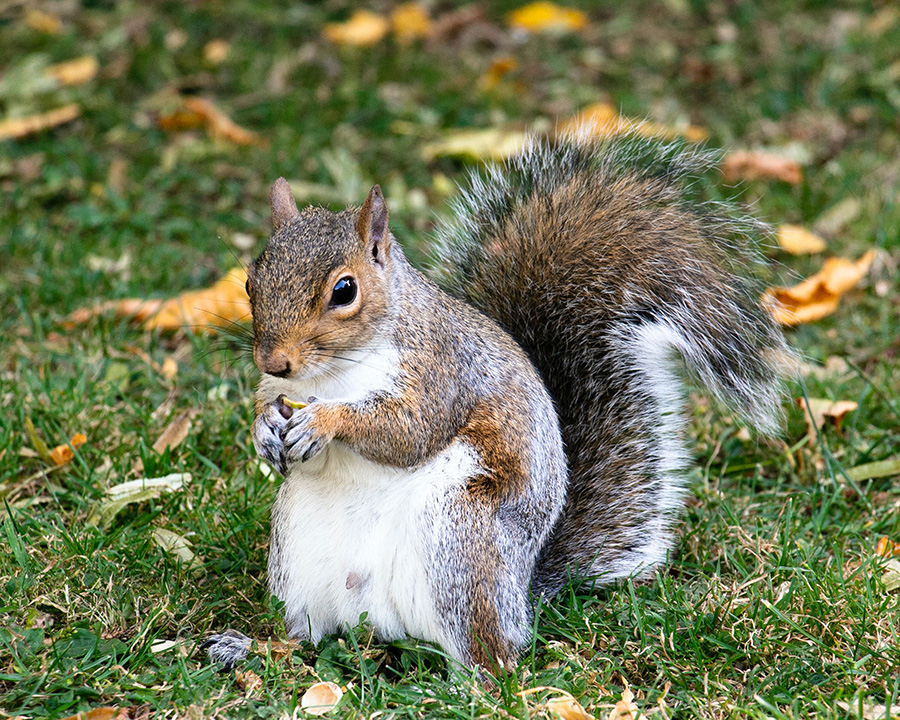Squirrels can be fun and adorable little critters, as long as they aren’t living in your house. These little rodents are well-equipped for suburban environments like many of the areas they populate in the NY/NJ area. Below, we will discuss some interesting and surprising facts about squirrels you might not have known.
Their Front Teeth Don’t Stop Growing
A common trait of rodents, the front teeth of squirrels continue to grow throughout their lives. The word “rodent” has its roots in the Latin verb for gnawing, “rodere.” Because of this, squirrels gnaw on hard surfaces, such as wood, stones, bricks, or nut-casings to reduce their teeth. They must chew and gnaw to file their front teeth down to a comfortable yet effective length. They may also chew on and eat barks, twigs, and soil, which help shave down their teeth while providing essential minerals.
Why Squirrels Bury So Many Nuts
We all know squirrels like to hide nuts and seeds to make it through the winter. However, they lose roughly 25% of their horde to other squirrels, birds, and other critters looking for food. Because of this, they play a vital role in ensuring that other species can survive until trees bear new food in the Spring.
Fake Food Burials
Since they lose so much of their stores to competition, they may pretend to hide nuts to throw off their rivals. Known as “deceptive caching,” squirrels may dig holes and cover them without dropping in food. They may do this if others are watching it, or just to be safe.
Zig-Zagging Rodents
Squirrels tend to avoid potential threats by zig-zagging. This helps them dodge attacks from predatory birds like hawks and owls, who tend to dive at them. This is also why you might observe squirrels spiral up a tree instead of going up one side. Unfortunately, zig-zagging doesn’t help them dodge cars as well.
Squirrels Were Added to Many Major Parks in the US
Many major city parks in the US had little to no squirrels back in the 1800s. While it may be hard to imagine Central Park without its many squirrels, they weren’t part of the scenery back then. But when initiatives for landscaping and beautifying local parks gained momentum after the civil war, urban designers suggesting bringing in the critters. They believed they would add to the atmosphere of the spaces. Sparrows, squirrels, and other small animals were reintroduced to the parklands. Initial projects found that urbanites loved the addition of the fluffy-tailed rodents, and they became a staple of parks across the country.
Squirrels Improvise and Adapt
Acrobatic and quite intelligent, these rodents will do almost anything they can for food. They can adapt to new environmental additions, like new obstacles in a backyard, and try different maneuvers and leaps to get to the food. They can even determine and remember shortcuts. Overall, this is why defending your birdfeeder can be difficult.
Hungry Hungry Rodents
Squirrels can eat a lot of food for their size. On average, the little rodents will eat their body weight in nuts, seeds, fungi, and other forms of roughage in a week. That’s about 1.5 pounds of food a week for them. They are expert foragers and can eat a wide range of plant life. In more scarce seasons, they may eat some insects, such as crickets and larvae.
Perfect Landings
Squirrels can fall from very high places without sustaining injuries, up to about 30 meters safely. They will also use their tails to help position themselves for a safe descent. Their fluffy tails can work as sails and parachutes.

